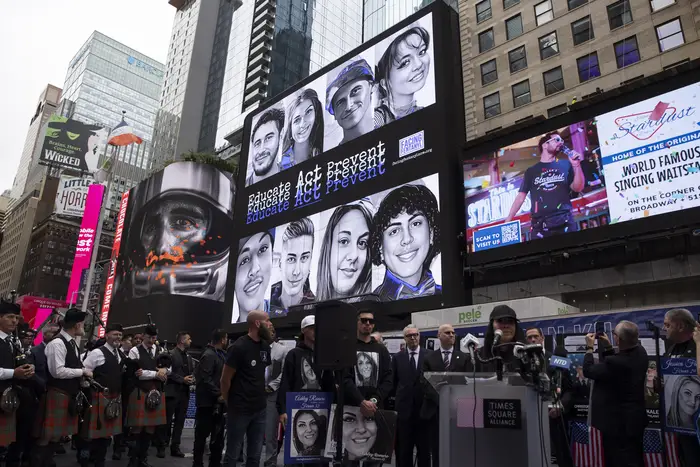UPDATE: New York City has achieved a significant milestone in its ongoing battle against drug overdoses, with a 28% decrease in deaths reported for 2024. The city recorded 2,192 accidental drug overdose deaths last year, a stark drop from 3,056 in 2023, according to the latest data released by the city health department.
This urgent update marks a critical turning point in a crisis that has plagued the city for years, mirroring a broader national trend. For the first time since 2018, overdose deaths have declined among Black and Latino New Yorkers, with reductions noted across all five boroughs. Mayor Eric Adams emphasized the importance of this progress, stating,
“Progress on reducing opioid overdoses will never make up for the families that have been devastated… but it gives us hope that brighter days are ahead.”
Despite the positive developments, challenges remain. The Bronx continues to bear a disproportionate burden, experiencing a 24% reduction in overdose deaths but still facing a death rate more than double that of Manhattan. Marilyn Reyes, a board member at the nonprofit Vocal NY, remarked,
“My borough’s devastated with the overdose deaths… The city must continue their investment in solutions that work.”
The city’s HealthyNYC project aims to reduce annual overdose deaths to 1,812 by 2030. However, experts warn that the battle is far from over. Toni Smith, state director for the Drug Policy Alliance, noted,
“There’s no guarantee that a trend downward this year means a trend downward next year.”
Staten Island reported the most significant improvement with a staggering 49% decline in overdose deaths. Dr. Michelle Morse, acting city health commissioner, asserted the need for ongoing support for life-saving programs, emphasizing the impact of historic disinvestment and structural racism in public health.
New York City has received approximately $190 million from legal settlements with opioid manufacturers, expected to rise to $550 million by 2041. The funds are being used to bolster treatment programs and harm reduction initiatives, including an investment of $41 million in fiscal year 2025.
Under Adams’ leadership, the city has operated two overdose prevention centers, allowing individuals to use drugs under the supervision of trained staff. Advocates argue that more centers are urgently needed, although the model faces legal uncertainties. In recent debates, candidates for mayor have expressed differing views on the future of these centers, with some advocating for their expansion while others propose elimination.
As the city grapples with these challenges, the next mayor will face the crucial task of maintaining momentum in reducing overdose deaths while addressing ongoing racial and geographic disparities. With the stakes higher than ever, the urgency to act remains clear.







